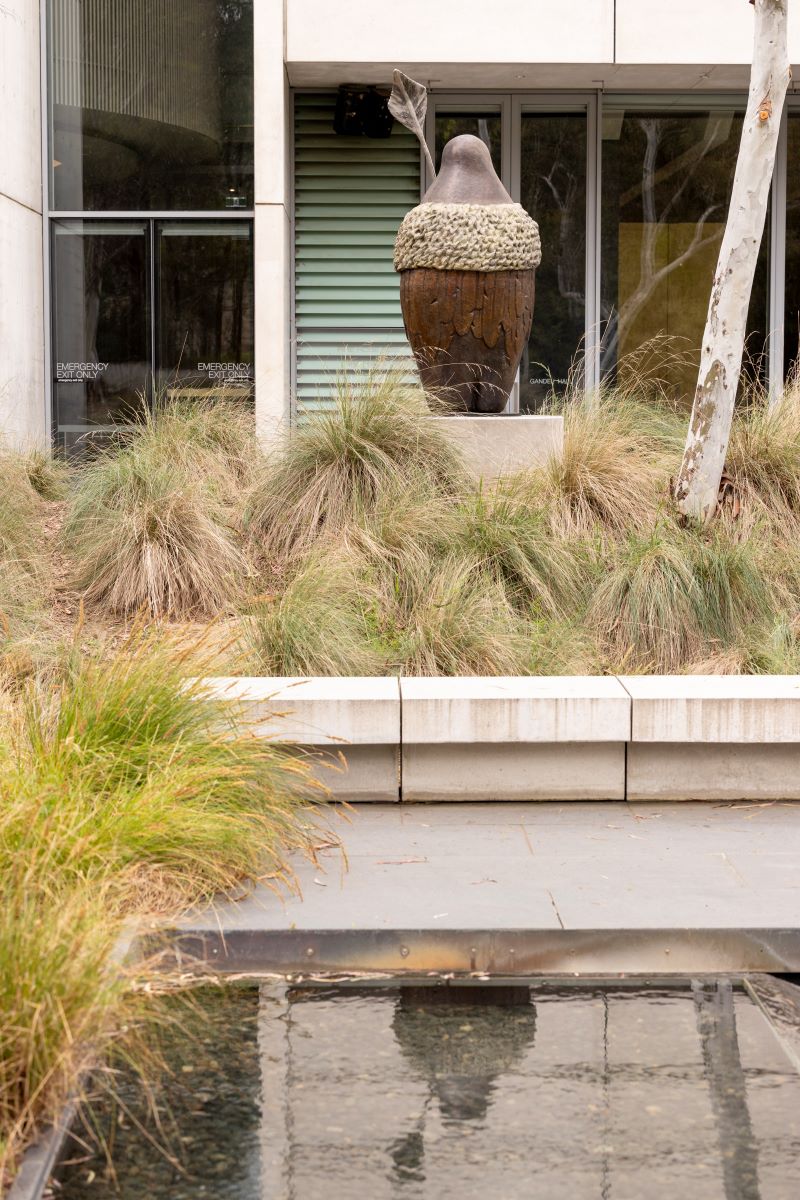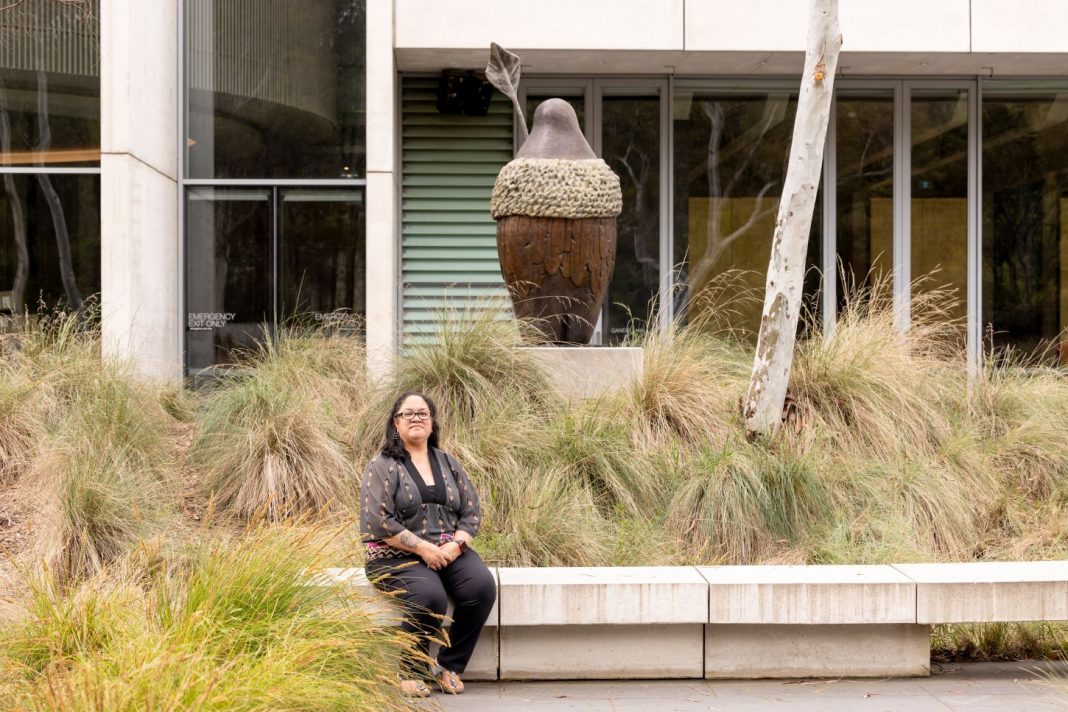The second work commissioned in the National Gallery of Australia X Art Makers series has been unveiled as Janet Fieldhouse becomes the first Torres Strait Islander person to be represented in the Sculpture Garden.
A proud Kalaw Lagaw Ya/Meriam Mir woman, Ms Fieldhouse is a skilled ceramist known for incorporating natural elements and textiles into her works to create pieces that tell culturally rich stories. Sister Charm, the large bronze piece that has been placed at the Gallery, touches on many aspects that are important to the artist’s culture, marrying them in one eye-catching form.
From an engraving of a sea turtle totem representing her great-grandmother to the inclusion of the male experience through a large feather, Ms Fieldhouse’s intricate details capture love and joy.
“The form itself is looking at actual charms that were used but I’ve made it more contemporary. The feathers that are on the figure itself are looking at the idea of a grass skirt as well as dance and celebration. The weaving basket is talking about the idea of memory, the carrying of food, the traditional weaving,” she says.
Although the small charms or protector dolls hold great power, they are often hidden away and not spoken of.
“There’s two ways of having it – you can have it a good way or a bad way. It is quite taboo, in the aspect of the projection of it, you don’t really see any of it, it is just there, and you don’t question it,” says Ms Fieldhouse.
The driving force behind commissioning Ms Fieldhouse to create the sculpture was Tina Baum, Gulumirrgin (Larrakia)/Wardaman/Karajarri peoples, Curator of Aboriginal and Torres Strait Islander Art. The curator was drawn to the uniqueness of Ms Fieldhouse’s works in her Never The Same 2021 collection.
“In this series, she made these charm dolls, which is completely different and is known through the Torres Straits. They can be used in so many different ways, whether it’s love charms or for bad purposes, but her charms that she has made are about goodness and love and positivity. I just really loved this direction she was going with them,” says Ms Baum.
Wanting to give the commission to an artist who hadn’t created a sculpture before Ms Baum says they also wanted to incorporate contemporary representation from First Nation Artists. Allowing the chosen artist to be able to guide their own creation was important for their own growth, the curator is excited to be part of a process that helps elevate creators on a national platform.
“It’s not enough for me as a curator or arts worker in museums and galleries to say ‘Hey, we love this work, let’s take it’ and we do what we want with it. It is about engaging with today and really celebrating their growth and joy in discovering these new skills,” says Ms Baum.

First creating the small vessels for the Never The Same exhibition, they all begin their lives as pinched pots that have been joined together. Ms Fieldhouse then adds the adornments, she says she often finds that some work and some don’t the prototype for the Sister Charm statue had removable elements.
“The one I started doing for NGA was a complete white body and the feathers you can take it off or you can leave it on, it can do what they wanted, the way it was moved around,” says Ms Fieldhouse.
In conjunction with the Art Makers collaboration, Ms Fieldhouse was able to see her work go from a 20cm ceramic work to an over two-metre-high bronze form through Urban Art Projects (UAP) in Brisbane.
“I couldn’t see it as a large object; I’ve never made anything that big or seen anything like this that big. So, going from small to big is full-on, it’s unbelievable,” she says.
The team created forms and worked with the artist to ensure the elements were captured correctly before creating the bronze cast. Ms Fieldhouse returned when the patina and touches were ready to be included, and says she was blown away by the methods that were used.
“The process that they did is completely different to the process I would have made my little piece.”
The patina was created through methods involving heat and spray. Ms Fieldhouse got hands-on adding the textured elements to her sculpture.
“It was so funny, I said to them ‘What happens if I stuff it up’ and they go ‘What we do is clean it off and we just restart it again’ and then there was a part that I did stuff up,” she smiles.
The final part of the process was deciding where to place the statue in the garden. Sister Charm stands in sight of water and a work that holds significance to the artist, Eran, 2010 by Thanakupi (Thancoupie Gloria Fletcher AO), Dhaynagwidh/Thaynakwith people.
“When in my young days, she was at the TAFE college and she was one of the mentors that we had there … the Cairns college at the time, the course was called Associate Diploma of Aboriginal and Torres Strait Cultural Arts,” says Ms Fieldhouse.
Sister Charm will be on display in the Sculpture Garden until next September when the NGA can decide to acquire it permanently.
See Sister Charm at the National Gallery of Australia Sculpture Garden. More details: nga.gov.au
Canberra Daily would love to hear from you about a story idea in the Canberra and surrounding region. Click here to submit a news tip.



